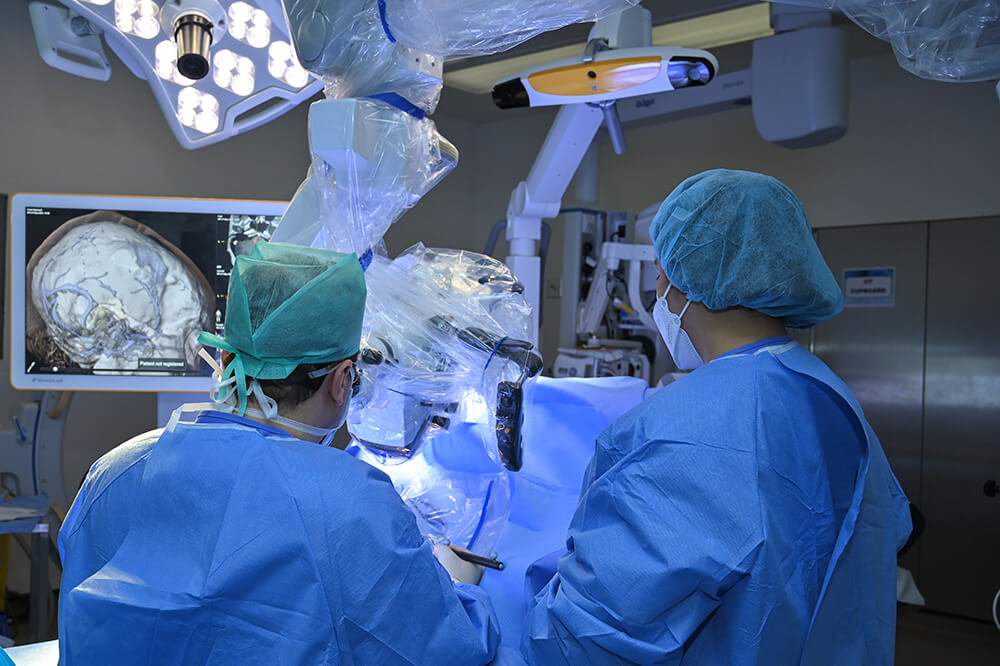Undergoing brain surgery is an intimidating process and being awake during it adds another layer of anxiety.
Awake craniotomy is a specialized surgical approach that allows surgeons to remove brain tumors while minimizing damage to
critical brain functions. If you or a loved one is preparing for an
awake craniotomy, this comprehensive guide will
provide you with valuable information, insights and tips to help you navigate the preparation process with
confidence.
What is the purpose of being awake during the surgery?
The answer lies in the delicate nature of the procedure; awake craniotomies are generally performed when the tumor is
located near or within critical areas that control essential functions such as speech, movement and vision. The
surgical team is able to interact with the patient in real time while monitoring their brain function, preventing
unintentional damage to vital areas.
“
Awake craniotomy, a truly revolutionary technique in neurosurgery, allows us to navigate uncharted territories
within the brain while preserving the patient’s consciousness. By engaging the patient in conversation during the
procedure, we can accurately map critical functional areas, ensuring the utmost precision in tumor removal or other
brain interventions.” Dr. Waseem Aziz, Consultant and division chair of Neurosurgery
The craniotomy procedure
Preoperative preparation
The surgical team uses preoperative assessments such as MRIs and CT scans to locate the tumor precisely.
Anesthesia administration
As part of an awake
craniotomy, a local anesthetic is used to numb your scalp and skull, while sedation may also be
used to help you relax. Then, the surgeon makes a small incision to remove a part of your skull to reach your brain.
Awake phase
The local anesthetic will keep the surgical area pain-free after you awaken from sedation. This is very critical and
requires neurosurgeons and anesthesiologists that are experts in this field.
Dr. Maged Raafat, Consultant Anesthetist, said: “Anesthesia plays a critical role in complex cases such as awake
craniotomy, as the priority is to keep the patient awake and alert, but pain-free, in order to respond to questions
and move during the surgery to ensure the surgical resection is safe.”
Brain mapping and stimulation
This provides your neurosurgeon with a map of the brain centers that control critical functions such as vision,
speech or movement to safely remove as much of the brain tumor as possible and avoid damaging these areas. In addition, this phase involves stimulating specific brain regions and you may be asked to perform tasks or answer
questions.
Closure and recovery
After tumor removal, the surgeon will close the scalp and skull incisions. After an awake craniotomy, you may have postoperative discomforts like headaches or mild pain at the incision site.
Follow your healthcare team’s instructions for pain management and care.
Lifestyle adjustments and recommendations before surgery
Preparing for an
awake craniotomy also involves making some lifestyle adjustments to optimize your overall well-being
and support your recovery. Here are some recommendations to consider:
- Stop smoking and limit alcohol consumption
- Engage in regular physical activity
- Maintain a healthy diet by eating fruits, vegetables, whole grains and lean proteins
- Find healthy ways to manage stress






